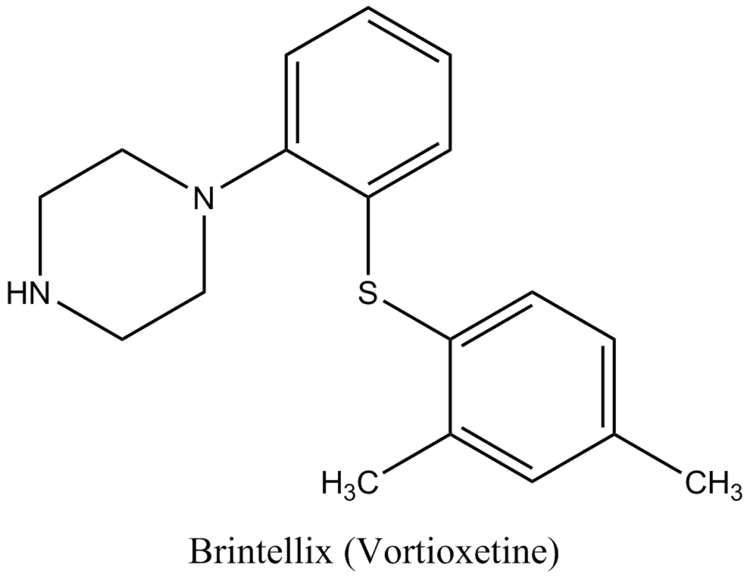Trade names Trintellix, Brintellix Protein binding 98% Biological half-life 66 hours DrugBank DB09068 | Molar mass 298.45 g/mol Formula C18H22N2S ATC code N06AX26 (WHO) | |
 | ||
Pronunciation /vɔːrtiːˈoʊksətiːn/ vor-tee-OX-uh-teen License data EU EMA: BrintellixUS FDA: Vortioxetine Pregnancycategory US: C (Risk not ruled out) Routes ofadministration By mouth (film-coated tablets) Legal status In general: ℞ (Prescription only) | ||
First week on trintellix vortioxetine chronically optimistic
Vortioxetine (trade names Trintellix, Brintellix) is an atypical antidepressant (a serotonin modulator and stimulator) made by Lundbeck and Takeda.
Contents
- First week on trintellix vortioxetine chronically optimistic
- Vortioxetine brintellix
- Medical uses
- Adverse effects
- Pharmacodynamics
- Pharmacokinetics
- History
- Research
- References
Vortioxetine brintellix
Medical uses
Vortioxetine is used as a treatment for major depressive disorder.
Adverse effects
The most common side effects reported with vortioxetine are nausea, diarrhea, dry mouth, constipation, vomiting, flatulence, dizziness, and sexual dysfunction. Vortioxetine used alone in high dose or in combination with other medications, such as other antidepressants, can produce a potentially life-threatening drug reaction known as serotonin syndrome.
Incidence of sexual dysfunction is reportedly higher in patients taking vortioxetine than in people taking placebos but appears to be lower than in people taking other antidepressants
Pharmacodynamics
Vortioxetine is a so-called "serotonin modulator and stimulator". It has been shown to possess the following pharmacological actions:
* Human isoforms
Pharmacokinetics
Vortioxetine reaches peak plasma concentration (Cmax) within 7 to 11 hours post-administration (Tmax), and its mean terminal half-life ( T⁄1/2) is ≈ 66 hours. Steady-state plasma concentrations are typically reached within two weeks. It has no active metabolites (i.e., it is not a prodrug).
History
Vortioxetine was discovered by scientists at Lundbeck who reported the rationale and synthesis for the drug (then called Lu AA21004) in a 2011 paper.
In 2007, the compound was in Phase II clinical trials, and Lundbeck and Takeda entered into a partnership in which Takeda paid Lundbeck $40 million upfront, with promises of up to $345 million in milestone payments, and Takeda agreed to pay most of the remaining cost of developing the drug. The companies agreed to co-promote the drug in the US and Japan, and that Lundbeck would receive a royalty on all such sales. The deal included another drug candidate, tedatioxetine (Lu AA24530), and could be expanded to include two other Lundbeck compounds.
Vortioxetine was approved by the U.S. FDA for the treatment of major depressive disorder (MDD) in adults in September 2013, and it was approved in Europe later that year.
Vortioxetine was previously trademarked as Brintellix in the United States, but on May 2, 2016, the US FDA approved a name change to Trintellix in order to avoid confusion with the blood-thinning medication Brilinta (ticagrelor).
Research
Vortioxetine has been studied in several clinical trials as a potential treatment for generalized anxiety disorder but results were inconsistent.
